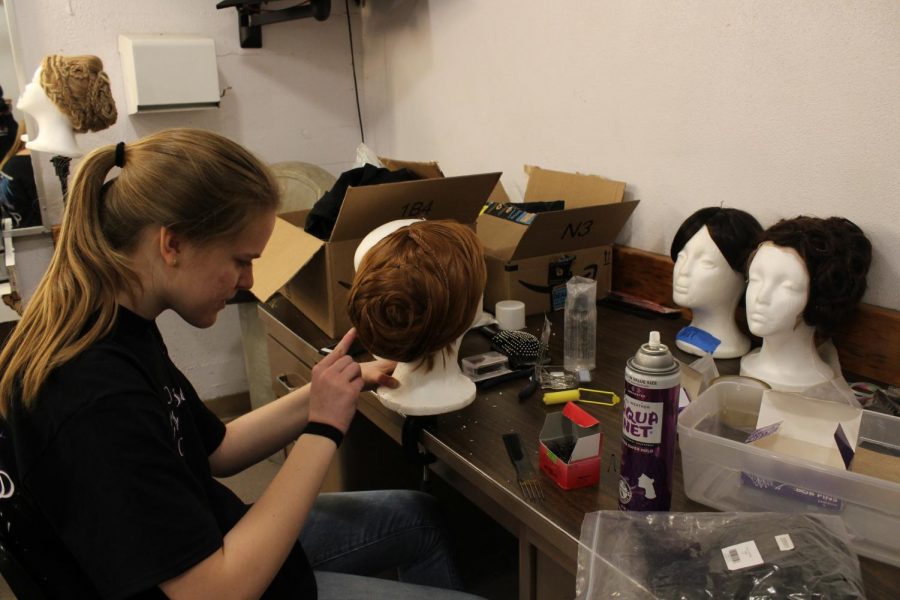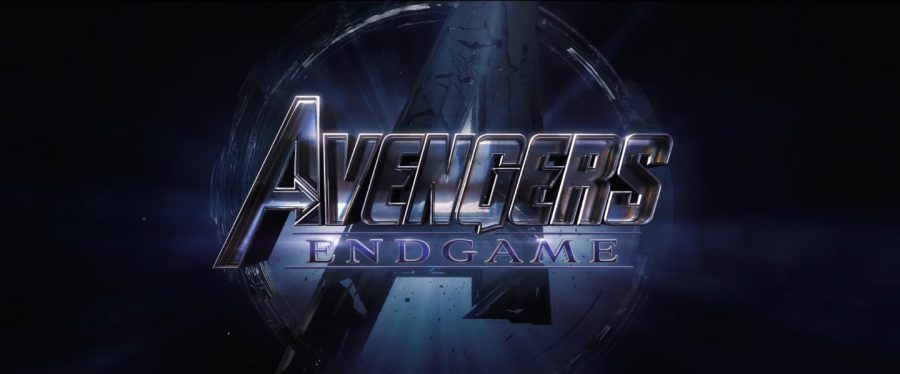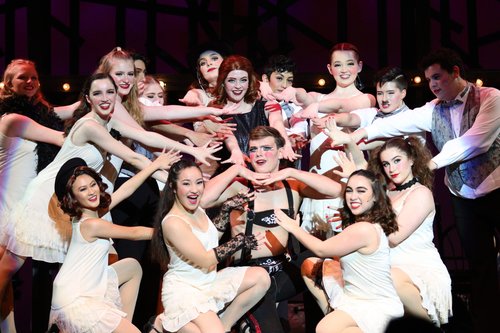FUHS’ annual spring musicals are known for their talented actors, singers, and dancers. However, what audiences see onstage are not only the performers, but a compilation of hard work and effort from the technical crew, led by the following featured students.
Calvin Tate (sophomore), Lighting Design
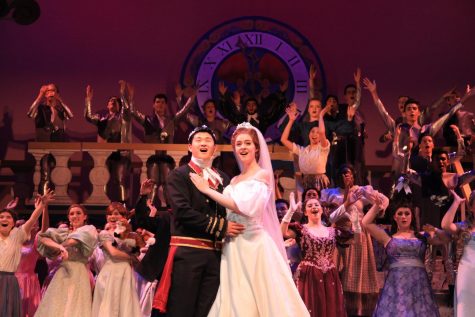
Lighting can be one of the most important aspects of any production; it can convey mood, transition scenes, and spotlight actors. And the lighting for Cinderella truly made it a fairytale.
Sophomore Calvin Tate worked as lighting designer on the show, illuminating the stage to suit its magical mood.
“This show was very fake, in the sense that it’s supposed to be a fantasy. At first I was going really realistic with [the design.] I strayed away from it because I had to really think to myself, ‘This really doesn’t have anything real about it,’” Tate said. “It’s supposed to be big and magical, so a lot of my design choices have been very vibrant colors with a lot of effects and cool design.”
For Tate, constructing a design relies heavily on the focal point of each scene, such as the actors and their placing.
“Making a design is pretty much going through every single scene and finding places that need shifts. That lighting needs to focus on certain places, to focus on certain actors or certain focal points,” Tate said.
Tate prefers to stay backstage as he finds that the finished product gives him the validation he needs.
“The audience doesn’t appreciate us as much because they can’t see our face, but I’m fine with that. I do enough for the show that makes my mark,” Tate said. “More and more, there’s a certain piece of me that likes how you can do something technically that has such a big influence.”
Timothy Coleman (junior), Sound Design
In addition to lighting, sound design is an important aspect of any production. Junior Timothy Coleman took the lead as head sound designer.
“The importance of sound design is centered around enhancing the show itself,” Coleman said. “Not only does it bring a new life to the show, but it also enhances elements throughout the production, things that audience members might not normally notice without hearing it.”
At the start of a show, Coleman was tasked with creating a sound of a giant falling down.
“It was a lot of me mashing together different small sounds to make a longer, more brought out sound. I [brought] different sounds together to create one central mix, creating this amazing sound,” Coleman said.
Because Cinderella is a renowned fairytale, Coleman wanted the sound to enhance that aspect.
“The story I tried to accomplish was not only keeping the show in its lifelike state, but I wanted to create a sense of it being a cartoon,” Coleman said.
Ruby Hernandez (junior), Prop Design
A technical aspect that is more noticeable onstage are the props. Junior Ruby Hernandez took the lead as head prop designer.
“We have to create and make props that people wouldn’t really think about. If there’s a table, we’ll add little perfume bottles or brushes, things that the characters in the show would have at their home,” Hernandez said.
Because FUHS’ MSA (music, speech and arts) building is currently under construction, the prop crew made majority of the props by hand. This was a difficult task because of the amount of masquerade masks in the musical.
“Our main challenge were the masks. Everyone has a different mask. They’re all made the same, but they have different colors. We went off a template, but they were still hard because we had to adjust them to the eye holes of the actors’ faces,” Hernandez said.
Like the other technical aspects, props are essential to any production.
“Without props, it’d be hard to understand what an actor is trying to do. In a scene, [character] Gabrielle falls in love and she uses a wine bottle to lure in [her love interest]. Without that wine bottle, it wouldn’t portray the story as well,” Hernandez said.
Elizabeth Gimple (senior), Hair and Makeup Design
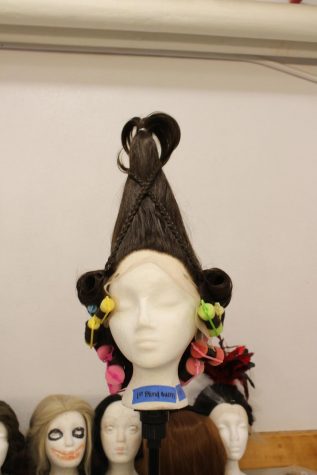
For hair and makeup, the designers begin by sketching their ideas for each character. Senior Elizabeth Gimple took the lead as head hair and makeup designer.
“We sketch out what we’re thinking of doing for designs based on time period and the character and their personality,” Gimple said.
Gimple was responsible for ordering and designing the wigs for each cast member.
“The thing about Cinderella is everyone has simpler attire and their ballroom attire, so every principle character had to have two wigs: the before, and the big hair for the ball when Cinderella comes,” Gimple said.
Specifically for Cinderella, Gimple used hair design to portray character development.
“It started out with two nasty stepsisters. The one I play ends up turning nice and helping Ella. In the beginning, they all have gross, ugly hairdos. One of them gets progressively bigger and worse, and the other gets simpler to show the evolution of the two characters,” Gimple said.
Not only is this important to depict the show’s nuances, but hair and makeup help actors truly bring the musical to life.
“The whole rehearsal process we’re working in sweats or a T-shirt and it’s messy. You’re yourself still. After the actor has developed their physicality, it really helps to add the element of costumes, hair, and makeup to fully become that person and not be yourself anymore,” Gimple said.
Samantha Brackman (junior), Stage Management
To lead the tech crews and the production, junior Samantha Brackman took the role of stage manager. The job entails calling cues for the show and more.
“We have to shift plots, which is tracking everything onstage, whether it’s a person, a prop, or set piece. Everything in the show is done by students, so we call the show,” Brackman said.
For Brackman, the most challenging aspect is shifting leadership positions from day to night.
“It’s hard being a student during the day, and then going to rehearsal and being a role model and important figure. It’s difficult making sure your peers see you as an authority figure in rehearsal, but stay friends during the day,” Brackman said.
Needless to say, the success of Cinderella was only possible through the tech crews effective leadership and creativity.

